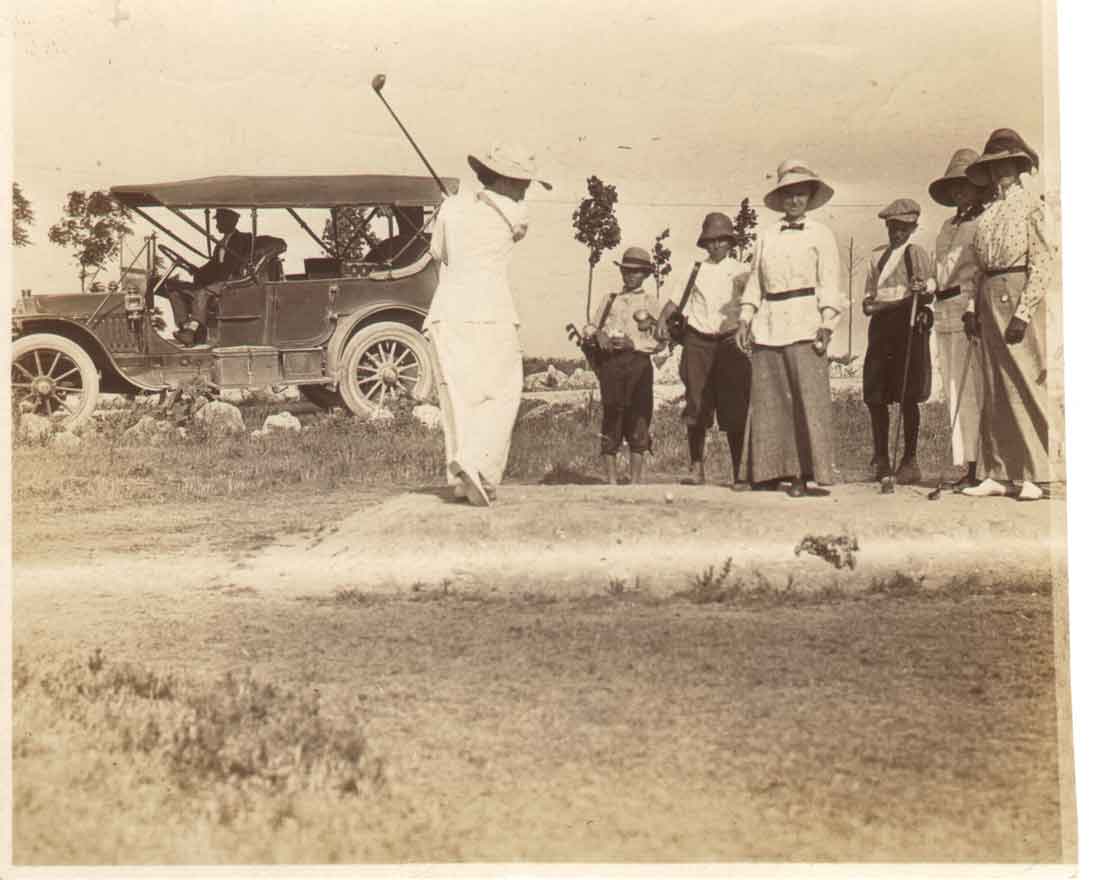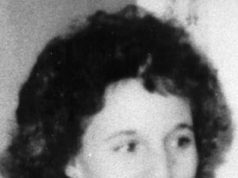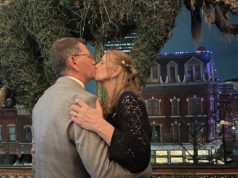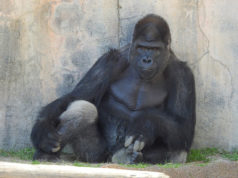It started out as a vanity book celebrating a historic country club, but River Crest Country Club: the First 100 Years evolved into something of surprising heft — physically and figuratively. Author Hollace Ava Weiner spent three years researching and writing and ended up with a work that comes in at a whopping 5 pounds with 544 pages including 950 photos and illustrations. The finished product is a unique, in-depth — though seldom hard-hitting — examination of Fort Worth’s exclusive Westside club and the role its members played in molding the city.
City pioneers with familiar surnames were among the early members when the club was established in 1911. Stripling, Meacham, Ryan, Burnett, Sampson, Waggoner, Bass, and other names seen today on street signs and buildings filled the rolls. Notable golfers such as Ben Hogan and Byron Nelson helped create a buzz about River Crest, along with fellow members Amon Carter, Van Cliburn, John Connally, and Elton Hyder Jr.
“The 100th anniversary was coming, and there [had never been] any written history of the club,” recalled former club manager Jodie Payne. “There were a lot of stories told verbally and whatnot. I started urging the board a good four years in advance that they should consider having a history of River Crest written.”
Club officials wanted more than a fluffy coffee-table book when they first began discussing the project in 2007. No hacks need apply. A book committee led by retired cardiologist Bobby Brown went on the hunt for an experienced historian with a knack for uncovering the past and describing it with vibrancy.
Fort Worth’s foremost sportswriter, Dan Jenkins, considered an offer but turned it down. The committee interviewed a handful of other writers, including Weiner, a former Fort Worth Star-Telegram reporter. Since leaving the paper in 1997, Weiner has established herself as the premier author on local Jewish culture with books such as Lone Stars of David, Jewish Stars in Texas, The Jewish “Junior League,” and Beth-El Congregation. Weiner blew away committee members with her energetic and passionate pitch to tackle the book.
“I ran into Dan Jenkins later after we got into the process, and I said, ‘Hollace is doing a wonderful job on this book,’ ” Payne recalled. “He goes, ‘You got that right. She’s one hell of a researcher — she’s telling me stuff about golf in Fort Worth that I didn’t know.’ ”
One of Weiner’s favorite chapters describes how Fort Worth became a major player in the evolution of women’s golf, a topic rarely explored in print.
“This city pioneered women’s golf in the United States, and it’s been forgotten,” she said. “All the golf books I found didn’t talk about it. I don’t want this to be forgotten. To me, that’s the most important thing in the book.”
Fort Worth was first city to host a state amateur golf tournament for women, in 1916, Weiner’s research showed. And the city and its jet-set crowd embraced Olympic champion Babe Didrikson when others wouldn’t. The Beaumont-raised Didrikson was brash and salty and hadn’t exactly been welcomed at other golf clubs in the early 1930s. Members of a Houston country club were turned off after she dared to play golf in pants rather than a skirt and erred further by playing hatless.
Didrikson established herself as an Olympic gold medalist in track and field in 1932 and later added golf to her list of sports. River Crest members Bea Thompson and Bertha Bowen took a shine to her despite her lack of social refinement. They created the Women’s Texas Open in 1934 to showcase her talent and allow her to compete against the country’s best female players. Didrikson married wrestler George Zaharias in 1938, and Babe Didrikson Zaharias would become a feminist icon, including being the first woman to compete in a Professional Golf Association men’s tournament.
Other chapters of Weiner’s book delve into the war years, clubhouse socials, and the city’s homegrown artists — a number of offspring from River Crest families would lead the city’s modern art movement in the mid-20th century. The book committee was fascinated by the variety of information that Weiner uncovered. A long-ago fire at the club had destroyed many historic documents, leaving Weiner to mine for archival gems the old-fashioned way.
“It means you have to go out and get people to tell you stories and pull their scrapbooks out of the attic,” she said. “It makes it a lot more interesting.”
Designer Garry Harman made the pages visually stunning with his generous use of archival photos and illustration.
River Crest is often characterized as the city’s first country club. But two previous attempts had been made to transform the rural property near the Trinity River’s West Fork into exclusive resorts and subdivisions. Both failed before River Crest successfully created its private club with an 18-hole golf course surrounded by high-dollar houses. Those early members even had access to a polo field and an airplane landing strip.
“A lot of the information that was compiled was an eye-opener for some members,” Brown said. “She was meticulous in her research.”
The book was intended to be about 250 pages. But Weiner kept discovering more stories and photos, and the stories often leaped past the boundaries of the club and into the wider history of a fledgling city and its development. Club officials encouraged her to go deep, and the book doubled in size. The club printed about 3,000 copies of the book, gave one to each of its 1,200 members, and allowed members to buy additional copies.
“It’s a phenomenal book,” Payne said.
The history wasn’t intended for public sale, and so it has received no reviews or media notice. But copies are available for reading at Fort Worth’s Central Library and southwest branch, Tarrant County Archives, the National Archives at Montgomery Plaza, and the special collections at Texas Christian University and the University of Texas at Arlington.
“I want people to know about it and use it,” Weiner said. “I want all this research and effort to be disseminated in other books. I want it to be incorporated in future histories of art, golf, and Fort Worth.”
Somebody’s noticed. Historic Fort Worth Inc. will present Weiner with a Preservation Achievement Award on Sept. 20 at the Community Arts Center in recognition of “significant contributions to the preservation of Fort Worth’s historic resources.”













Thanks for the amazing write up. I feel like I won the Pulitzer Prize.